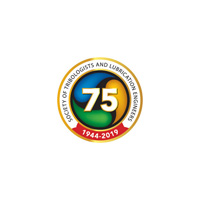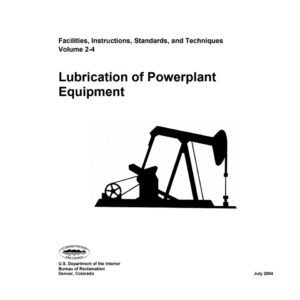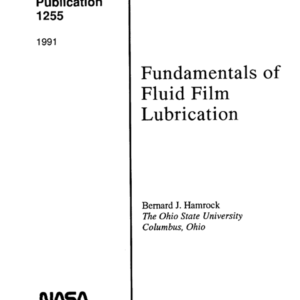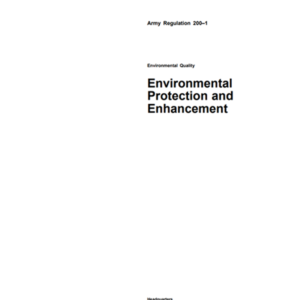Description
ContentsI.- Definition of Asset Management in the context of the
- ISO 55001 Requirements (refer also to EN 16646 for physical assets)
- Physical Asset Hierarchy and ISO 14224:2016
- ICML 55 Attributes and Requirements in the context of machinery lubrication
- Reliability philosophies and strategies
- Condition-based maintenance
- Reliability Culture
- Financial Analysis and Economic Justification
- Failure Modes Effects Analysis (FMEA), Failure Reporting, Analysis and Corrective Action System (FRACAS), and Root Cause Analysis (RCA)
- Asset design change process and management of change
- Criticality analysis and risk management
- Metrics, KPIs, Scorecard, Overall Equipment Effectiveness (OEE)
- Asset life cycle engineering and management
- Design for reliability, operability and maintainability
- Managing Sources of vibration and wear, including fasteners, alignment and balance
- Procedure-based maintenance and standardized work
- Procedure-based maintenance ensures consistent execution of maintenance tasks.
- Standardized work takes a broader approach to optimize the
- PM Optimization
- Work Management, Planning and Scheduling
- Shutdown, Turnaround and Outage Management
- Operator-driven Maintenance, Autonomous Maintenance, Total Productive Maintenance
- Enterprise Asset Management (EAM) and Computerized Maintenance Management System
- Stores, Parts and Inventory Management
- Workforce management, skills and training
- Condition-based maintenance versus breakdown maintenance
- Predictive Maintenance
- Proactive Maintenance
- Inspection 2.0
- CBM technologies (lubricant analysis, vibration, thermography, acoustics, motor current, etc.)
- CBM for major machine categories: pumps, compressors, turbines, gearboxes
- CBM Integration and Program Management
- CBM Data Management
- Mechanical Friction, Fluid Friction, Dry Friction
- Lubrication Fundamentals
- Lubrication Regimes
- Film Thickness, Specific Film Thickness, Mixed Film
- Film Strength, Additive and Chemical-induced Films
- Mechanical Wear, Abrasion, Adhesion, Surface Fatigue
- Liquid and grease lubricants, formulation science, base oils, common thickeners, common additives
- Solid-film Lubrication and Types
- Physical and Chemical Properties of Lubricating Oils and Grease
- Common Lubricant Laboratory Test Methods
- Differences and Unique Physical and Chemical Properties
- Skills Required for Lubrication Technicians
- Skills Required and Performed by Operators and Inspectors
- Skills Required and Performed by Mechanics and Millwrights
- Skills Required and Performed by Reliability Engineers and Maintenance Supervision
- Skills Required and Performed by by Plant Management
- Standardized Training, Tasked-based Training and Competency
- Lube Room Design for Reliability, Safely and Environmental Requirements
- Design and Use of Storage Facilities of Bulk Tanks, Tank Farms, Totes for Reliability, Safety, Environment, and Regulatory Requirements
- Standardized Lubricant Labeling for Packaged and Bulk Vessels
- Spill Containment and Leak Protection Practices for Environmental Protection and Basic Regulatory Compliance
- Transfer, Handling, Dispensing, Filtration from Drums, Totes and Day Tanks
- Transfer, Handling, Dispensing, Filtration from Bottles, Jugs, and Small Grease Packages
- Selection and Use of Workplace and Lube Room Tools and Accessories and Basic Care and Storage
- Safety Practices Related to the Storage and Handling of Lubricants
- Basic elements of Reliability-centered Maintenance (RCM)
- Failure Patterns and Weibull Distributions Basic Elements
- Ranking of Lubrication-specific Failure Modes and Causes and the Use of Failure Modes Effects Analysis (FMEA)
- Optimum Selection, Set-up and Use of Lubricant Application Devices and Hardware
- Optimum Selection, Installation and use of Contamination Control Devices/Hardware
- Instrumentation requirements including selection and location of online oil analysis sensors
- Optimum Selection, Location, and Use of Sight Glasses and Level Gauges for Lubricated Equipment
- Optimum Selection and Use of Relubrication and Oil Change Hardware & Tools
- Optimum Selection and Location of Sampling Valves and Hardware
- Purpose and Use of Drip Pans, Grease Traps, Berms, Purge Ports
- Optimum Selection and use of Tags, Labels and Plates
- Vendor Selection Based on Product Range, Product Quality, Product Performance, Support & Services
- Elements in Generic Lubricant Specifications
- Common Machine or Application
- Lubricant Specification Elements (base oil, additives, thickeners, performance properties, physical properties, chemical properties, and health and safety properties)
- Food Grade Lubricant Selection, Application, and Regulations
- Rationalized Lubricant Consolidation to Optimize the Number of Lubricant Grades and Brands
- Lubricant Cross-Contamination Risks, Compatibility Testing,
- Proper Labeling Methods Using Standardized Classifications and Visual Identification System
- Standardized Classifications
- Routine Scheduled Work and PMs
- Unplanned and Condition-based Work Request Processing
- Lubrication-Related Work Prioritization and Planning
- Lubrication-Related Work Kitting, Skill Matching, and Crew
- Work Scheduling
- Lubrication-Related Unplanned and Planned Work Backlog
- Lubrication-Related Troubleshooting Faults and Anomalies
- Lubrication-Related Record Keeping, Documentation, and CMMS
- Periodic Lubrication Tasks for Controlling Correct Lubricant Supply
- Periodic Lubrication Tasks: Frequency, Volume, and Criteria
- Proper Oil Top-up Procedures
- Proper Grease Relubrication Procedures for Common Machine
- Lubricant Drain and Purge Criteria and Methods for Major
- Contamination Control Tasks in Periodic Lubrication
- Machine Flushing Requirements, Risks, and Benefits
- Methods for Oil Reclamation in Lubricated Equipment
- Lubricant Waste Handling, Disposal and Cleanup
- Leak Detection, Management and Leak Cleanup
- Safety in Lubrication Maintenance Tasks
- Inspection of Lubricated Machines for Optimum Reliability, Safety, Environmental Protection, and Condition Monitoring
- Inspection of Lubricated Machines: Optimizing Intervals, Routes, and Autonomous Practices
- Selecting and Installing Machine Inspection Windows for
- Selecting, Using, and Caring for Inspection Tools and Aids for
- Inspection Protocol for Common Machine Types: Optimized
- Inspection Protocol for Spare Parts, Stored New Machines, and Standby Machines: Ensuring Reliability and Readiness
- Inspection Personnel Skill Sets and Training for Optimum
- Examples of Inspection Checklist, Findings Report, and Documentation for Lubricated Machines
- Examples of Integration of Inspection with Other Condition Monitoring Practices
- Selecting Optimum Tools and Procedures for Lubricant Analysis
- Selection of an Off-site Oil Analysis Laboratory
- Selection of Onsite Oil Analysis Testing
- General In-service Lubricant Sampling and Analysis Program Design
- New Lubricant Receiving Requirements
- Stored Lubricant Sampling and Analysis – Packaged and Bulk
- Selection of Routine Lubricant Test Slate and Standardized Methods
- Selection of Exception Tests, Conditions for Use, and
- Selecting Data Alarms and Limits for In-Service Lubricants
- General Strategy for Data Interpretation of In-Service Oil Analysis
- Data Management and Overall Program Management for In- Service Oil Analysis
- Reporting and Responding to Non-Conforming Data in In-Service Oil Analysis
- Integration of In-Service Oil Analysis with Other Inspection and Condition Monitoring Methods
- Accuracy and Quality Verification in an In-Service Oil Analysis Program
- Basic Troubleshooting Procedures for Lubricated Systems
- Applying FRACAS for Lubricated System Fault Management
- General RCA Policies and Guidelines for Lubricated Systems
- RCA Phases for Lubricated Systems: Data Collection, Assessment, Corrective Action, Inform & Follow-up
- Data Collection and Evidence Preservation for Lubricated Systems
- Root Cause Assessment Methods for Lubricated Systems
- Guidelines for Responding to Root Cause Conditions for Lubricated Systems
- Guidelines for Responding to Incipient Failure/Faults for Lubricated Systems
- Responding to Impending/Precipitous Failure for Lubricated Systems
- Responding to Sudden-Death or Catastrophic Failure in Lubricated Systems
- Guidelines for Fault/Failure Findings from Rebuild Shops for Lubricated Systems
- Incoming Lubricants, Parts, and Machine Product Acceptance
- Certificate-of-analysis of Lubricant Supplies
- Internal/external Cleanliness and Packaging
- Lubricant supply agreement terms and conditions related to quality and services provided
- Aligning with Suppliers through Effective Lubricant Safety and
- Services of Off-site Service Providers and Rebuild Shops (quality, part cleanliness, roll-off cleanliness, documentation, findings reports, etc.)
- Disposal of Lubricants, Filters, Rags, Containers
- Cleaning of Containers, Parts, Hoses, Components and Devices
- Labeling and Documentation of Hazardous Waste and Non- Hazardous Materials for Used Lubricants and Cleaning Solvents:
- Disposal of Hazardous and Non-hazardous Materials
- Alignment to ISO 14000
- Influence of Lubricants and Lubrication on Energy Conservation
- Influence of Lubricants on Atmospheric Contamination
- Environmental-friendly Lubricants (e.g., biodegradability)
- Lubricant Aqueous Toxicity, Risk and Assessment
- Organizational Goals and Policies
- Optimized and Practical Use of Lubricants and Lubrication Conservation and Environment Protection
- Disposal & waste management
- Safety Training, Policies and Guidelines
- Hazardous Lubricants and Toxicity
- Microbial Safety Risks and Control of Transmission (to other machines)
- Fluid Pressure and Fluid Injection Risks (blood stream injection)
- Lubricant Mists in the Work Environment
- Confined Space Risks
- Fire and Combustion Risks
- Electrocution Risks
- Mechanical Risks
- Selection of Dehydration Methods and Practices
- Additive Reconstruction of Aged or Damaged Lubricants
- De-varnishing of Fluids and Machine Surfaces
- Industrial Oil Acid Scavenging Methods
- Industrial Lubrication: Standby, Storage, and Commissioning for Special Requirements
- Special Lubrication-related Practices to Protect Machines and Parts In Storage or Standby
- XXIII.
- Micro Metrics of Machines and Lubricant Conditions
- Macro and Big-picture Metrics for Overall Fleet or Plant Machine Health
- Mapping and Aligning Metrics to Return on Net Assets (RONA)
- Overall Equipment Effectiveness (OEE) (related to asset
- Leading Metrics that Predict Future Conditions or Events
- Lagging Metrics that Report or Summarize Past Conditions or Events (what just happened)
- Lubricant Consumption Ratios/Metrics
- MTBF and General Machine Reliability Metrics
- Lubrication Route Compliance Measurement
- Percent Planned Maintenance, Workforce Efficiency, Wrench Time
- Metric Communication
- Performance Control and Remediation
- Culture of Continuous Improvement
- Improved Data Analytics for Lubrication Practices (Industry 4.0 Approach)
- Improved CBM Sensor Application and Scope
- Improved Cost Reductions in Lubrication Practices (Leveraging Resources)
- Improved Production Output
- Improved Energy Consumption through Optimized Lubrication Practices
- Improved Environmental Protection
- Improved Safety Through Optimized Lubrication Practices
- Improved Product Quality and Timely Delivery through
- Improved Profitability Through Optimized Lubrication Practices
- MTBF (Mean Time Between Failures)
- MTTF (Mean Time to Failure)
- MTTR (Mean Time To Repair)
- Availability
- System Configurations: Series vs. Parallel
- Bathtub Curve
- Infant Mortality Phase
- Useful Life Phase
- Wear-Out Phase
- Failure Modes and Effects Analysis (FMEA)
- Identifying Failure Modes
- Applying Design and Process FMEA
- Root Cause Analysis (RCA)
- The 5 Whys and the Fishbone Diagram
- Fault Tree Analysis (FTA)
- Tracing Latent and Systemic Causes
- Statistical Reliability Methods
- Weibull Analysis
- Accelerated Life Testing (ALT)
- Design HALT and HASS Test Protocols
- Life Prediction Models
- Load-Stress Failure Relationships
- Design for Reliability (DfR)
- Integrate Reliability into the Design Process
- Reliability Allocation Across Subsystems
- Apply Derating, Redundancy, and FMEA at Design Time
- Reliability Block Diagrams (RBD)
- Construct RBDs for Complex Systems
- Analyze Series-Parallel Structures
- Simulation for Mission-Critical Systems
- Maintainability and Availability
- Availability Metrics
- Reliability-Centered Maintenance (RCM)
- Classify Failure Modes and Consequences
- Select Proactive Maintenance Tasks
- Decision Logic for Maintenance Planning
- Condition-Based Monitoring & Predictive Maintenance
- Understand Monitoring Technologies
- Estimate Remaining Useful Life (RUL)
- Risk Assessment and Safety Standards
- Apply ISO 31000 – Risk Management Framework
- Apply IEC 61508 – Functional Safety of E/E/PE Systems
- Apply MIL-STD-882 – System Safety
- Perform HAZOP – Hazard and Operability Study
- Perform FMECA – Failure Modes, Effects & Criticality Analysis
- Perform LOPA – Layer of Protection Analysis
- Assess and Verify Safety Integrity Level (SIL)
- Reliability Growth Modeling
- Model Reliability Growth
- Analyze Model Results
- Plan Test-Fix-Test Campaigns
- Regression or Maximum Likelihood Estimation to Estimate Model Parameters
- Regression Analysis
- Maximum Likelihood Estimation (MLE)
- Test-Fix-Test Campaigns and Reliability Growth Modeling: A Structured Path to Proven Reliability
- Execute Testing and Capture Failures
- Apply Fixes and Validate Improvements
- Model Reliability Growth and Estimate Parameters
- Manage and Document the Growth Campaign
- Reliability Demonstration Through Test Planning
- Reliability Demonstration Through Test Planning: A Comprehensive Approach to Product Validation
- Defining Test Objectives and Targets
- Selecting Strategy and Sample Size
- Execute and Analyze
- Data Collection and Failure Reporting
- Data Collection and Failure Reporting: Turning Operational Data into Reliability Insight
- Design Data Collection Systems
- Enable Accurate Failure Reporting
- Use Data for Reliability Improvement
- Implementing FRACAS Workflows
- Designing the FRACAS Workflow
- Capture and Classify Failures
- Drive Actions and Monitor Results
- Analyzing Warranty and Service Data Trends
- Unlocking Hidden Reliability Insights
- Collect and Structure Warranty Data
- Analyze Patterns and Key Performance Indicators (KPIs)
- Apply Insights to Reliability Programs
- Human Factors and Organizational Reliability
- Enhancing System Performance through Human-Centered Design
- Identify Human Error Risks
- Apply Human Reliability Techniques
- Mitigate Human Error
- Reliability Engineering Standards Reference List
- Reliability Engineering Checklists
- FMEA Checklist (Design or Process FMEA)
- Root Cause Analysis (RCA) Checklist
- Test-Fix-Test Campaign Checklist
- FRACAS Reporting Requirements Checklist
- Reliability Engineering Templates & Worksheets
- Failure Report Form (FRACAS Aligned)
- Root Cause Analysis (RCA) Worksheet
- FMEA Table Template
- Maintenance Strategy Planner (RCM-Based)
- Data Collection Log for Testing
- Reliability Growth Tracking Table
- Lubricants Review
- Storage, Handling and Application of Lubricants
- Lubrication Storage Methods
- Lubrication Handling Methods:
- Lubrication Application Methods
- Transportation Lubricants
- Engine Oils
- Physical Properties
- Classifications
- New Engine Oil Tests
- Used Oil Analysis for Engine Oils
- Classifications
- API
- SAE
- New Oil Tests
- Transportation Lubricant – Used Oil Analysis
- Greases
- Types of Friction in a Lubricated System
- Types of Wear in a Lubricated System
- Factors Influencing Wear in a Lubricated System
- Process for Selecting the Best Lubricant for an Application
- Types of Base Oils and Additives Used in Lubricants
- Different types of bearings, their characteristics, and their applications:
- Common Greased Bearing Failure Modes, Causes, and Remedies
- Different types of lubricating greases, their characteristics, and their applications:
- Lubricating Grease Testing Methods and Their Purpose
- Storage, Safety, and Environmental Concerns for Proper Use of Lubricating Grease
- Types of Gears and Their Applications
- Types of Gear Failures, Causes, and Remedies
- Types of Gear Oils and Their Applications
- Methods of Gearbox Lubrication and Their Applications
- Gear Oil Testing Methods and Their Purpose
- Storage, Health & Safety, and Environmental Concerns for Gear Oil
- Types of Hydraulic Systems and Pumps and Their Applications
- Common Hydraulic System Failures, Causes, and Remedies
- Types of Hydraulic Fluids and Their Applications
- Storage, Health & Safety, and Environmental Concerns for Hydraulic Fluids
- Types of Combustion Engines and Their Applications
- Engine Oil Testing Methods and Their Purpose
- Application Methods for Metalworking Fluids (MWFs)
- Storage, Health & Safety, and Environmental Considerations for Metalworking Fluids (MWFs)
- Types of Air Compressors and Their Applications
- Common Air Compressor Failures, Causes, and Remedies
- Types of Air Compressor Oils and Their Applications
- Tests for Air Compressor Oil and Their Purpose
- Types of Chains That Require Lubrication and Their Applications
- Types of Chain Lubricants and Their Applications
- Types of Wire Ropes and Cables That Require Lubrication and Their Applications
- Types of Seals, Gaskets, and O-Rings in Lubricated Systems and Their Applications
- Compatibility of Seals, Gaskets, and O-Rings with Lubricants
- Tests for Seals, Gaskets, and O-Rings
- Types of Cleaners and Solvents Used in Industry and Their Applications
- Application Methods, Storage Considerations, and HSE (Health, Safety, and Environmental) Considerations for Industrial Solvents and Cleaners




